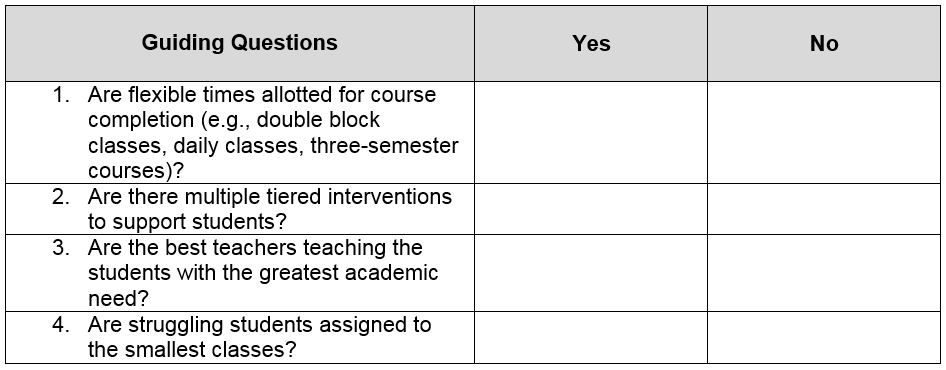A school’s master schedule provides valuable information about teacher schedules, course offerings, and class locations. At the same time, a master schedule also reveals much about a school’s culture, priorities, and beliefs. The National Association of Secondary School Principals (NASSP, 2011) noted that a school’s master schedule “is like looking at an MRI of the inner workings of a school. It is the window to the soul of the school” (para. 3). Similarly, Crawford (2008) observed that “if you want to get a window into a school’s core values and identify competing goals, look at how schools allocate and use time” (p. 252). How can a school create a master schedule that reflects its inclusive values and priorities?
Developing the Master Schedule
- administrators
- general education teachers
- special education teachers
- specialists and resource teachers (e.g., interventionists, English Language Learner teachers), and
- guidance counselors (Florida Inclusion Network, n.d., p. 5).
The team lays a foundation for scheduling by drawing on each member’s expertise. Team members first collaborate to identify the school’s instructional priorities and student needs and subsequently draft the master schedule. (Click here to read about one process for creating a student-focused master schedule. Additional master scheduling resources are available from the Florida Inclusion Network or School Scheduling Associates.)
Refining the Master Schedule
The following checklist, based on characteristics of student-focused master schedules (NASSP, 2011), may be used as a planning or reflection tool. “Yes” answers to the questions in Table 1 suggest that a school master schedule focuses primarily on student needs and student learning whereas “No” responses may indicate areas for growth.
Table 1
Select Characteristics of Student-Focused Master Schedules

Additional Resources
To learn more about inclusive schools, visit the Inclusive Schools Network™. Educators can complete a Quality Standards for Inclusive Schools Self-Assessment Instrument to reflect on all components of an inclusive school (e.g., procedures, instructional practices, collaboration).
References
Crawford, M. (2008). Think inside the clock. Phi Delta Kappan, 90(4), 251-255. Retrieved from http://www.jstor.org/stable/20446087
Florida Inclusion Network. (n.d.). Flexible scheduling for in-class supports: A blueprint for change. Retrieved from http://www.palmbeachschools.org/ese/documents/FlexibleSchedulingforInclusivePractices
National Association of Secondary School Principals. (2011, May). The master schedule: A culture indicator. AP Insight Archives. Retrieved from http://www.nassp.org/tabid/3788/default.aspx?topic=The_Master_Schedule_A_Culture_Indicator
Williamson, R. (2008, March).The schedule as a tool to improve student learning. Middle Level Leader Archive. Retrieved from http://www.nassp.org/Content.aspx?topic=57198




